The Star of the Mist is the “starter adventure” included in The One Ring second edition core rulebook by Free League. I ran it with a group of only three players. It was also my first hands on experience with The One Ring as a Lore Master – having previously used the Adventures in Middle-earth ruleset (D&D 5e) a few years ago. This article contains my first impressions of the game and thoughts and advice on running The Star of the Mist.
The game was played as a one-shot during an evening, and we rolled characters and got through the adventure in around four hours – however, we didn’t get into the optional aspects of the adventuring site and I could have spent more time on the journey and intro, to enhance the atmosphere.
I used the information from the supplement Ruins of the Lost Realm several times to add context to the game and found it super helpful.

If you are unfamiliar with The One Ring (TOR) Second Edition, I’ve written a long review comparing it to D&D 5e for ease of reference. I’ve also written extensively about Adventures in Middle-earth, the D&D 5th edition version of TOR 1ed.
The Fellowship:
We created three characters from scratch in about 45 mins (I had printed an extra copy of cultures and weapons to speed things along). The players said it was easy to make meaningful choices and make a character with a clear focus, and the core rules were easily explained and understood.
Note that everyone just picked a name from the list provided in the core book, and it worked brilliantly to ensure that the style and atmosphere was kept, and it was quick.
Baranor, Ranger of the North, Warden
Ellahir, Elf of Lindon, Champion
Folko Truefoot, Halfing of the Shire, Burglar
…and the old pony Frido.
They picked Círdan as Patron.
First Impressions
Playing the adventure, we found that journey’s worked well, but felt as ‘a system’, and I would need to work more as Lore Master to make scenes or incorporate them into the narrative. It may also be a matter of getting used to the style.
The combat was fast and crunchy enough to be interesting.
Both melee-characters carried spears (which is unusual for RPGs), because they are very strong weapon choices in TOR. The Ranger even did a combo, where the spear got a very high chance of injury, but due to poor dice rolls, it didn’t work quite as intended for this game. Being new to the game, they didn’t coordinate to cover the key travel skills, and I did encourage it, but didn’t insist. If it had been for the start of a campaign, I would have made sure to have them focus on that or let them ret-con after the first journey experience. The consequences were that they took a long time to travel, gained lots of fatigue, and were almost wounded just by passing through the Shire.

The shadow points came much more into play than in my experience with Adventures in Middle-earth, which was great. It was one of my criticisms for the previous edition of the 5e rule-set. It actually ended with the elf running out of hope during the final encounter, and he would have had a bout of madness, had it not happened at the end of the evening or for a full campaign game.
Despite having tokens in the middle of the table, they forgot to spend their Fellowship Points, which only demonstrate that it takes a bit of practice to incorporate that mechanic.
The more narrative style, versus pushing minis on a grid for 5e, worked very well for us. I will get into why below.
Now to the adventure… SPOILERS from here on!
Running The Star of the Mist
I began the adventure on the beach at the Grey Havens where Círdan explained the task, while he was building a ship.
I used the bandits as the hook. Their mission was to scout out the trouble and the disappearing travelers, but I also added the rumour of the light at night and the history of the place – which the ancient elf would clearly know. The hook turned out to be a challenge in the beginning for me and ended perfectly.
The fellowship decided to go by the roads through the Shire, then turn south along the road to Sarn Ford, as a point for further exploration. I couldn’t find the rules for journey’s through a ‘green area’, but I’m sure I’ve seen them somewhere…
As mentioned, the characters weren’t well configured to cope with the hazards of the journey. I found it fun to improvise the hazards of the journey to make them make sense in the narrative. One was a hunting accident (Ups! Was that a sheep?!). Another was a team of horses stampeding while pulling a hay wagon, which almost wounded the elf, and Truefoot leading them astray into some marshy terrain at an attempt of a short cut. I could have create more scenes out of them, but I was mindful of our time.

Fatigued, they arrive at the Sarn Ford, where I added the elven camp from Ruins of the Lost Realm (but without introducing the adventure hook), which meant they had a safe place to rest for a couple of days and burn off two fatigue points.
While at the camp, they see the light from the Star of the Mist. The elf rolls a Lore check and can convert it to a magical success, which he does with a point of hope. I turn that into a sort of vision, like Frodo seeing the Eye of Sauron at Rauros. Ellahir sees the crown and the jewel nailed to the skull of a human figure on top of the tower. They don’t know whether he is undead, but it is very enticing.
So far, they had been mostly concerned about the brigands, so that added additional motivation and understanding of the plot.
When back on their feet, they journey towards the Star and locate the brigand group.
Arrival at the Adventuring Site
When they come to the foothills, they can see the tower across the ravine, but I also describe it as being hidden in an unnatural mist (partly to further discourage trying alternate routes to get there). The fellowship also easily discover the brigand camp.
Here I missed the bandit leader foreshadwing Elwen’s presence, which would have caused the characters to ask questions about her, adding context and mood.
All of the characters are quite stealthy. Truefoot scouts the cave all the way across the bridge to see if they have any prisoners. He finds none, and they decide to bushwack the three brigands at night. They easily sneak up on the lone guard and subdue him, and then proceed to bag the other two.
They interrogate them and learn about the dozen who are off raiding. I also add some information taken from Ruins of the Lost Realm, which worked well. The leader tells them, that he works for the men on the Black Ship, and he use it to threaten them. Which of course doesn’t work on them, but hints to a wider conspiracy and a larger world. For a campaign, it would work even better.
The group binds the bandits together and bring them with them into the caves. They cross the bridge and find their stores and treasure. After securing the riches, they proceed into the Flooded Chambers.
I don’t think I understood the locations of everything in the Flooded Chambers quite as the designers intended. On the map below, you can see how I ran it. I certainly didn’t catch that the Marsh Dwellers and treasure was in the same place (although that idea makes sense, but isn’t communicated on the map).
They notice the person (dwarf) fleeing into a tunnel and go after him, but I describe the labyrinthine nature of the place. They retreat and then he strikes the bell. The six marsh dwellers attack, and would be a big challenge, I think, but the bandits act as bait. One character throws a knife to them, while they fight. But despite having a chance to free themselves and fight back, one bandit gets dragged off into the deep halls. They kill two other marsh dwellerss and the rest flee.

Having the bandits drag them off illustrate the danger, and it is always awesome to have minions or NPCs to attack to demonstrate lethality or potential dangers.
After resting a short while, they take the stairs. They decide not to open the sepulchers, and I think that goes well with the Middle-earth style gameplay.
If I were to run it again, I would put the House of Records into a smashed semi-open Sepulcher. I don’t think many players will “defile” the graves. That way, you get to deploy the backstory, which I always think is best to do, and not hide it behind a “condition” or roll.
Furthermore, I’m not sure it makes sense – as written – that the dwarf comes from the same hallway as the Marsh Dwellers. But making their lair more obvious would be beneficial, if they are to find some treasure.
Above ground in the mist, they find a place to bind the two remaining bandits. I add the Old Well from the list of expansion options. The orc skeleton adds context (but who would cover the well after he falls down there?).
They then explore the Accursed Halls, read the Black Speech (and gain shadow points) and now Lady Elwen emerge through the mist.
A battle ensues, but it is quickly resolved against the characters. A couple of poor rolls and then three failed Shadow Tests when she uses her Strike Fear ability means everyone scatter into the mist. Ellahir has a bout of madness at 0 Hope, and they flee down the stairs as they regain their courage, leaving the bandits to their fate.
We wrap up, with the players considering their mission a success, because they found out what the bandit threat was and gained a lot of knowledge and a bit of treasure.
Conclusion & Review
The game was definitely a success. The players described it as very atmospheric and something they would like to play again – the only caveat was from one player, who isn’t big on Middle-earth. He prefers Warhammer RPG, which I also love, but that is down to taste. He liked that rules, which worked well and smoothly and allows you to play a narrative game with enough crunch to make combat and drama interesting.
The journey rules they did find a bit artificial (though fitting the setting), but that may be partly my fault. Had it been a campaign game, or had I had more time in the session, I would have used more content from the Shire pack in the Starter Set, expanded a bit on the events as scenes and maybe added an encounter of some kind, to create a more organic experience.
On the other hand, they could see how your skill at Travel and other journey skills would determine what you can realistically set out to accomplish, and would force a novice group to break longer journeys into smaller bites. Compared to the 5e (1ed) version, they characters don’t have any abilities to hand waive or easily overcome problems (like the Wanderer’s Known Lands or Ways of the Wild class features), and that made the travel rules and skills more important.
I didn’t find the Flooded Chambers map super easy to decode. It is for example confusing that the improvised bridge isn’t there and that the bandit stash isn’t indicated on the map. I printed out a copy for the players and cut the names out. I don’t know why they didn’t explore more? Because it was unusual for them to have a visual they could investigate, perhaps?
The escaping dwarf made me think of a criticism I had of the D&D 5e adventures for the previous edition. Escaping villains happened several times in for example the Mirk Wood Campaign. The problem in a ‘combat with grid game’ like D&D is that players expect to be able to use their abilities to move faster and catch them on the battle map. This doesn’t happen in The One Ring, and as a more narrative game (with no movement stat) none of my players expressed any annoyance of this ploy.
The fight with Elwen was cool, and I had read online that she was too tough for a beginner group. That turned out to be the case. On the other hand, we did see a roll against the marsh dwellers with three additional ‘6s’ on attack, and a total of 20 damage, which would almost bring her to zero. So, with luck, she can be defeated.
One thing I think is really missing, is stats and more information on the Crown of Hadirion. It must be important to the Dunedaín! It should also have some form of wonderous power. But the adventure doesn’t say which. Or add any kind of history to it. I think it is a serious oversight, and would have been a nice box to add.
All in all, it would have worked well as the first adventure to a campaign. If that had been the case, I would have added the full details of Tindalin at Sarn Ford – and potentially run that first, depending on the characters – and added stronger links to the Black Ship and Tharbad. The Tower would have become a location that they would have returned to several sessions later, which would have worked extremely well – also with a couple of wonderous items at the right pace.
In hindsight, and with a full campaign ahead of me, I would work more on the hook and add more flavour along the way. But as mentioned, the ‘find out why people are missing’ mission worked super well. To add more ‘meat to that bone’, I would probably include a prisoner, meaning they would have another NPC to talk to. Perhaps someone the bandits want to ransom to a family in Tharbad (providing another hook into potential stories). It would also mean that they would feel a greater sense of accomplishment, without taking on the main threat.
We had a great time. I would be very happy to run a campaign in The One Ring 2e.
P.S. That Moria: Through the Doors of Durin expansion makes it even harder for me to stay away in the future.
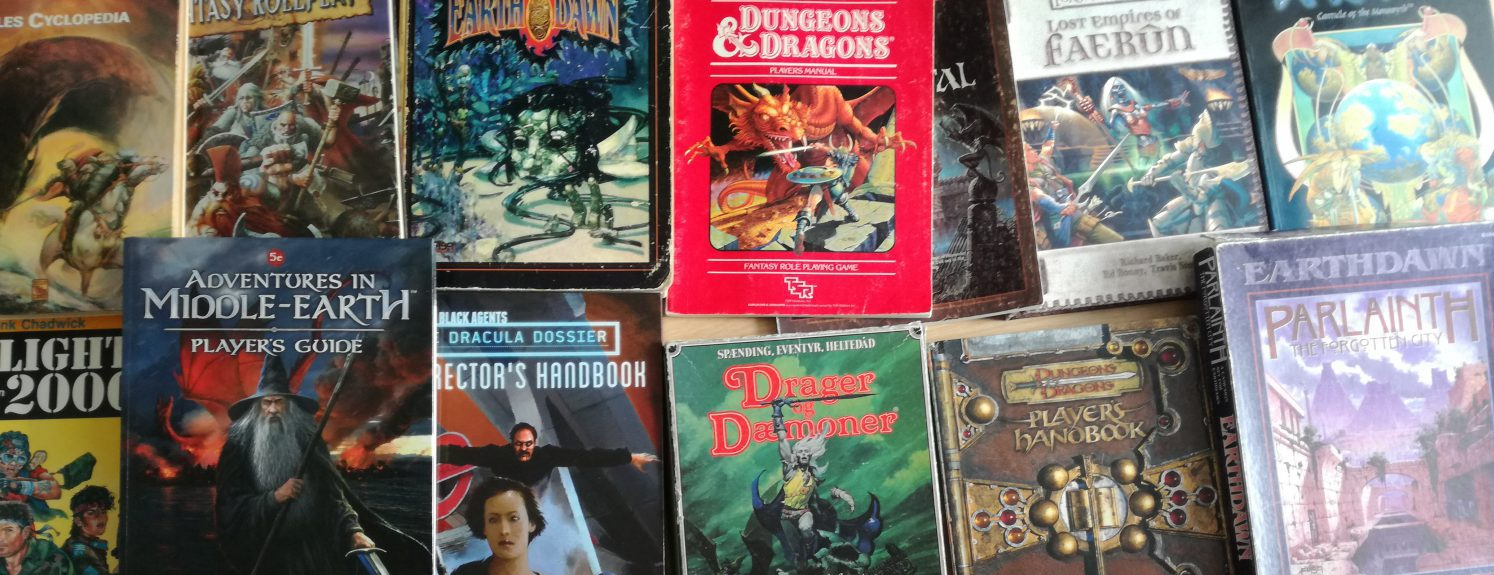
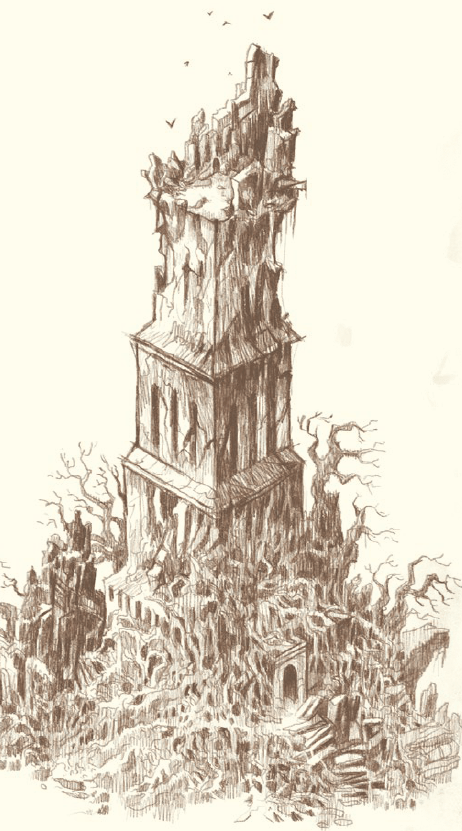



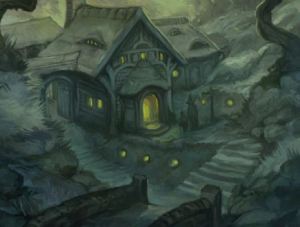

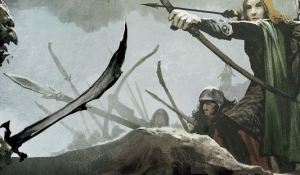

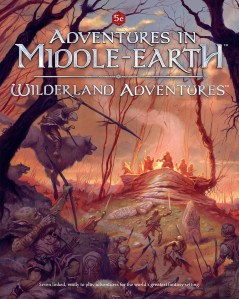



 The game is published by
The game is published by 
 The most significant ‘new thing’ in the game, in my view, is a system for journeys. I won’t go into the detail of the rules, but whenever the group needs to travel to an adventure location, they need to use the journey rules, in place of the regular overland travel and random encounters described in D&D.
The most significant ‘new thing’ in the game, in my view, is a system for journeys. I won’t go into the detail of the rules, but whenever the group needs to travel to an adventure location, they need to use the journey rules, in place of the regular overland travel and random encounters described in D&D.